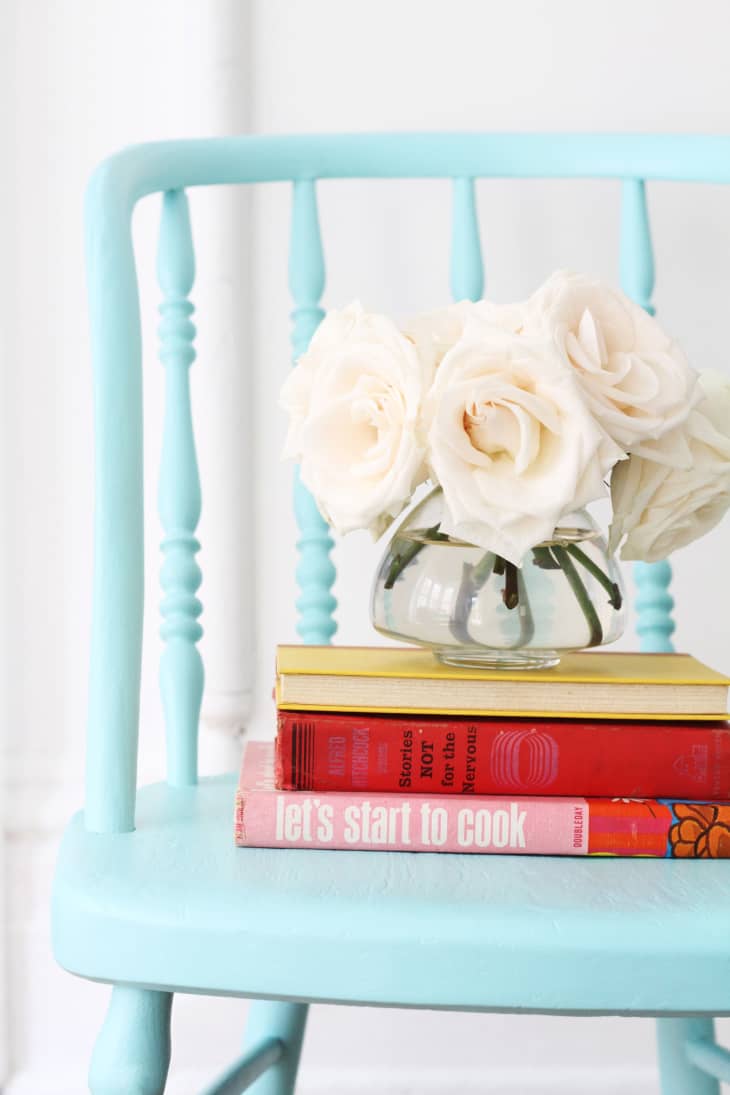9 Big Mistakes People Make When Painting Furniture

Here at Apartment Therapy, we are no stranger to painting furniture. It may be one of the oldest tricks in the book, but it is still one of the most effective ways to breathe life into old furniture and make it feel fresh and new again. And while painting furniture is not rocket science, we’re here to help you avoid some of the most common pitfalls, so you can nail your paint job with the first try.
#1: Doing Nothing to Prep
It’s easy to jump in with your paint brush before properly preparing both the furniture and our workspace (guilty). Though tedious, setting down drop cloths, cleaning and, in some cases disassembling furniture, is all part of the job. It may not be as sparkly and glamorous as the actual painting part, but it’s key to preventing messy work that you will end up having to redo. It may take more time up front, but doing things right will save you the headache later.
#2: Neglecting to Strip and Sand
Depending on the type of project, you will may need to strip your furniture first, but you will always need to do some light sanding. If you’re using an opaque paint color, there’s no need to strip it, unless the paint below is heavily cracked or peeling. Just give it a light sand using 220 grit sandpaper and you’re good to go. Always be sure to sand lightly as to not ruin any of the wood beneath.
For furniture you wish to re-stain, you will need to strip your furniture. It’s a big messy process, but, if you are prepped and ready to roll up your sleeves, it’s not half bad. It’s actually rewarding to carefully scrape off big swathes of old stain.
#3: Failing to Protect Yourself
When you’re using products like furniture stripper or a power sander, make sure you’re being smart. Those chemicals can eat through lacquer, paint, and varnish, so your skin is especially vulnerable. Heavy duty gloves and protective eyewear are a must. Every. time.
#4: Leaving Behind Dust
After you’ve sanded your furniture, it will be dusty, and even the tiniest bit of dust can ruin an otherwise beautiful finished piece. Make sure you have some tack cloth on hand, and take your time to wipe away all the dust well.
#5: Buying Any Old Paint
The type of paint you use is very important. There is cabinet and furniture paint on the market that is made specifically for painting furniture, and specially designed to go on smooth for a beautiful finish. Or, consider something different along the lines of chalk paint, which has a more specialty finish, and requires less prep. To save time, look for a paint that has primer built in.
#6: Laying it On Too Thick
Painting furniture is all about layering on multiple light coats. If you go too thick with your strokes, paint will most likely drip, and then it’s game over and you’re back to square one—having to re-sand the furniture over again. Try using a small foam roller for all the bigger surfaces always keeping an eye out for any bubbles. Be sure to let each coat fully dry before adding another. Check the instructions on your paint can label, because some paints take longer to cure than others.
#7: Missing a Spot (or 10)
Before you finish each coat, take a second to move around the piece and check all your angles. It’s easy to miss a few spots, or even an entire side. At the same time, let your furniture dry completely before flipping it over to see another side. Otherwise you’ll mess up your pretty paint job.
#8: Getting Impatient
It’s tempting to want to touch and poke your project to see if it’s dry. Paint can take DAYS to cure, even if it appears dry to the naked eye, so keep your hands off and just wait. Put your hands in your pockets and walk away.
#9: Not Sealing the Deal
Don’t forget to seal the deal. Use a polyurethane varnish to finish off your furniture and protect your new piece.
Painting furniture can be very rewarding: to take a sidewalk score, or a family heirloom, and make it your own is worthwhile work, as long as you do your research, prepare in advance, and take your time. Then you can enjoy your new-to-you piece of furniture!